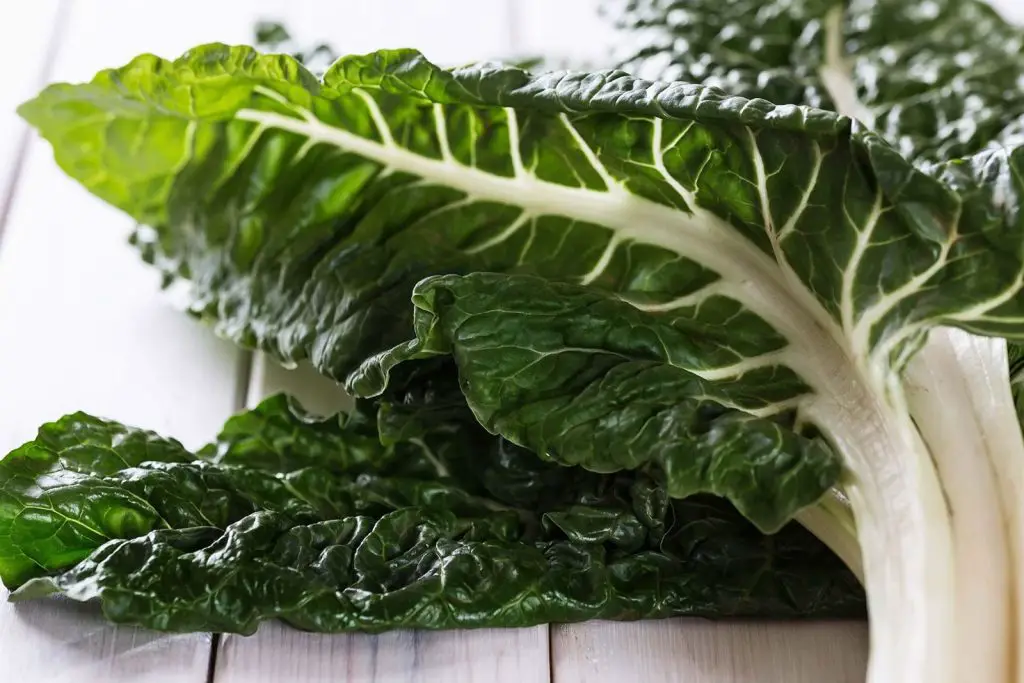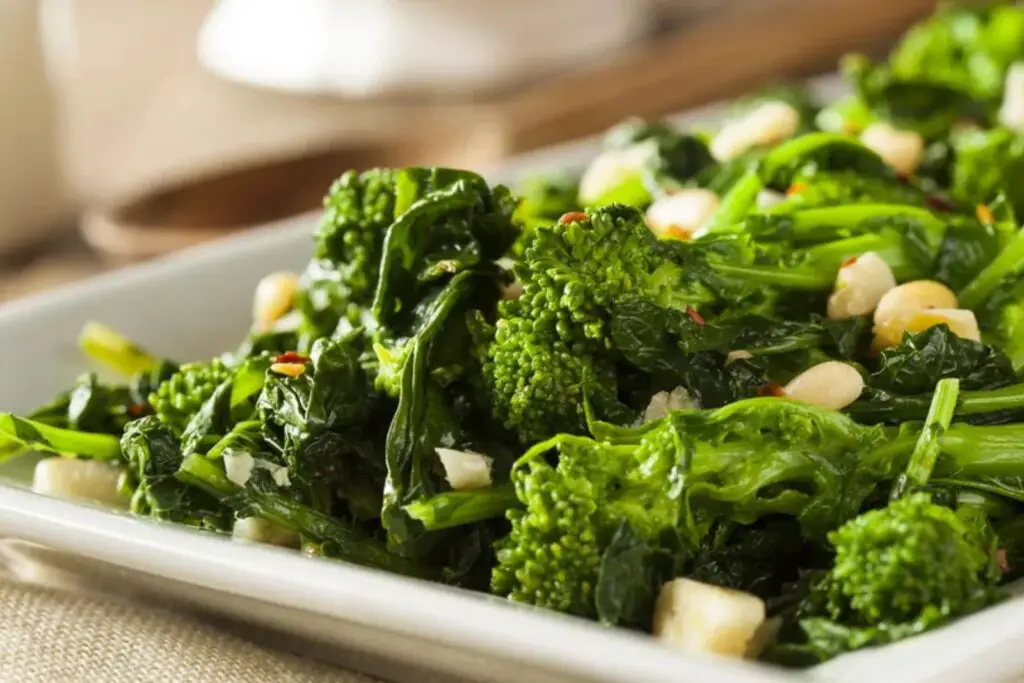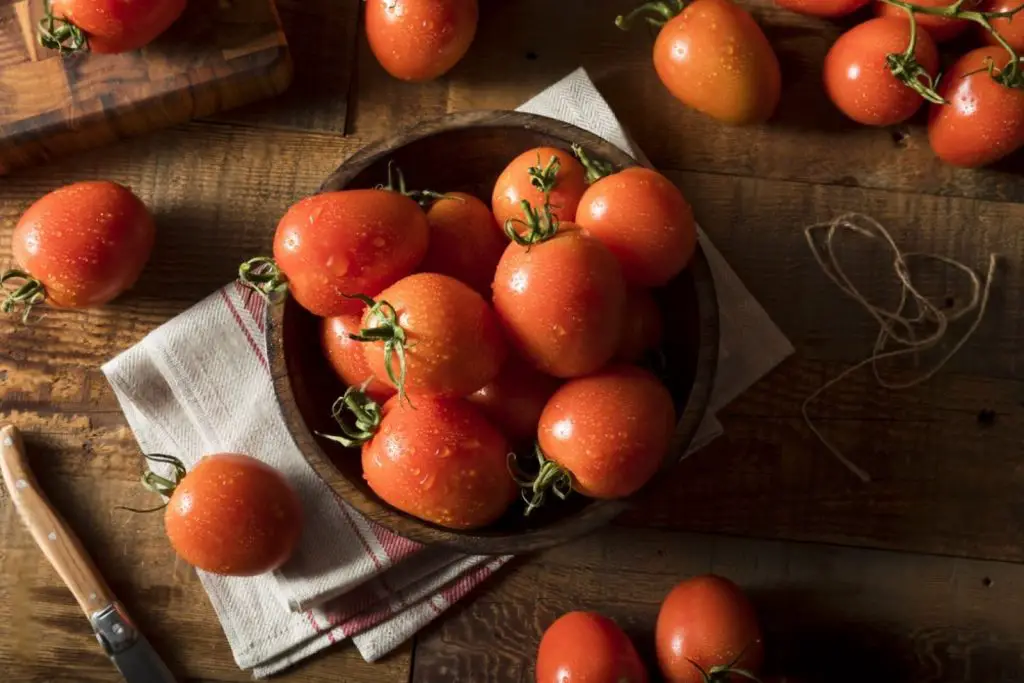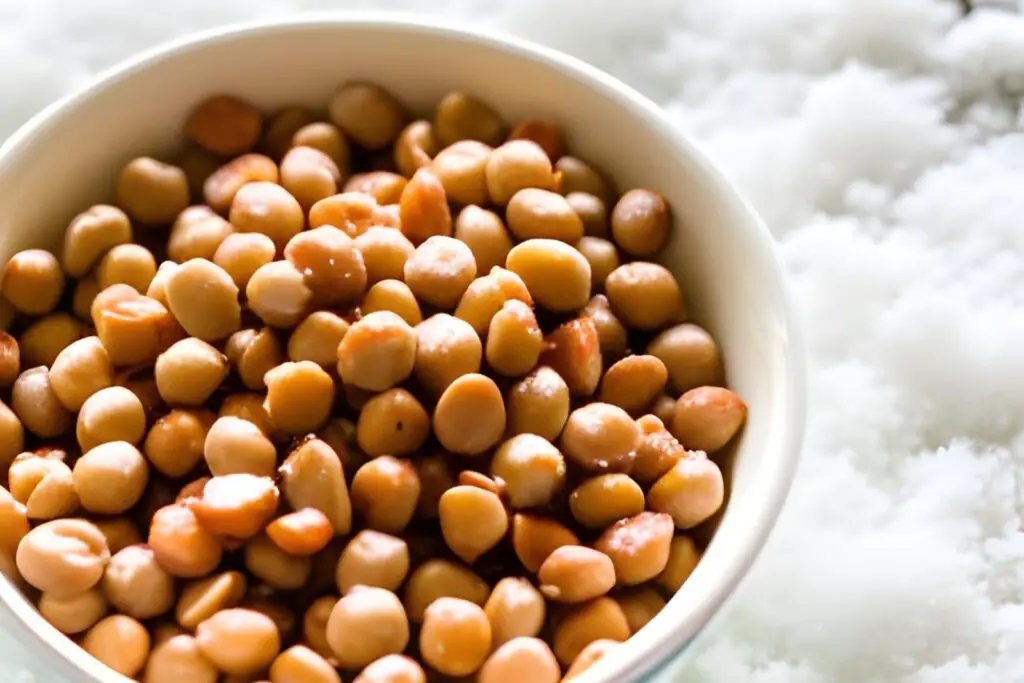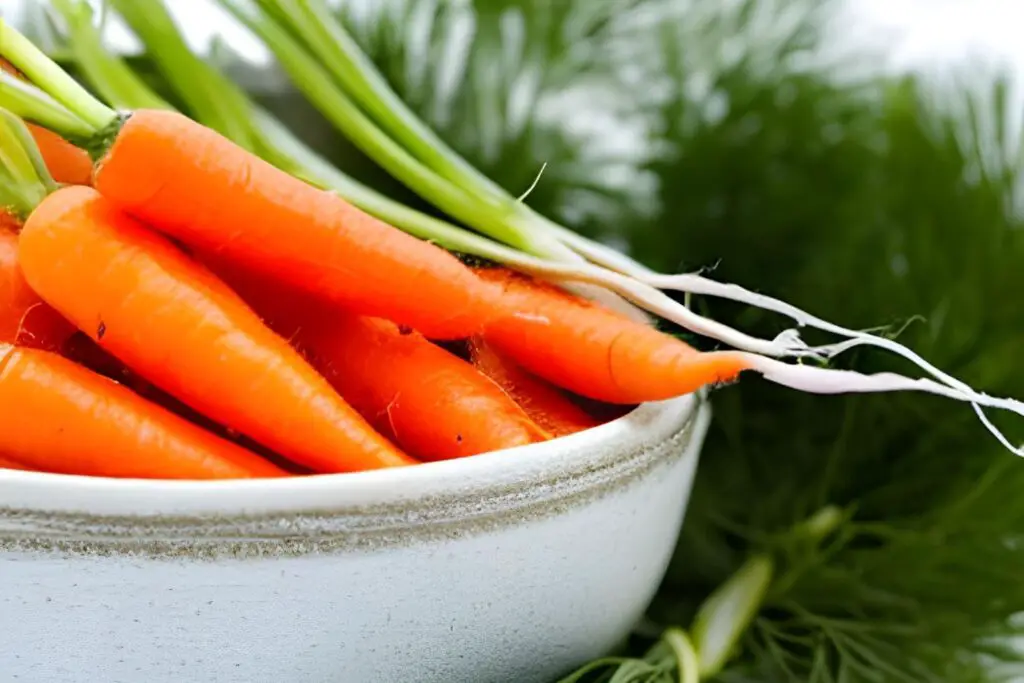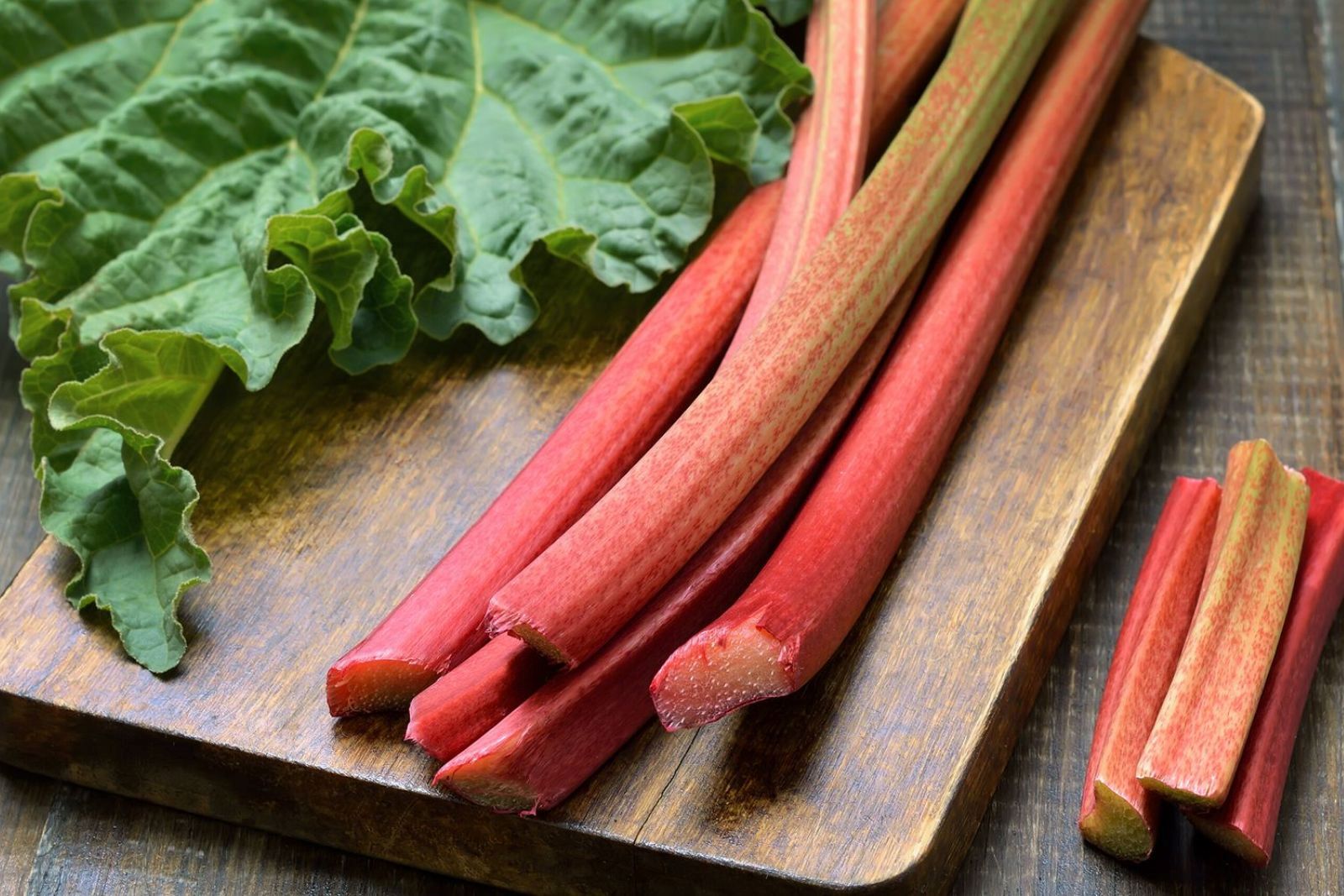
Rhubarb is a unique and vibrant vegetable often mistaken for a fruit due to its tart flavor and its common use in desserts and jams. This versatile plant features long, thick stalks that are crisp and acidic, with a bright red or green color. Rhubarb is primarily harvested in the spring and early summer, and its distinct taste adds a delightful tanginess to a variety of dishes. From classic rhubarb pie to compotes, sauces, and even savory dishes, rhubarb’s tartness balances well with sweeter ingredients.
If you have an abundance of rhubarb or want to enjoy its distinct flavor beyond its peak season, freezing can be an excellent way to preserve its freshness. Freezing rhubarb allows you to have this tangy ingredient at your disposal whenever you desire, ensuring that you can enjoy its unique flavor and versatility throughout the year. In the following section, we will explore the process of freezing rhubarb and provide tips for maintaining its texture and taste after thawing.
Here are the steps to freeze rhubarb:
- Step 1: Choose fresh and firm rhubarb stalks
- Step 2: Wash and trim the rhubarb
- Step 3: Cut the rhubarb into desired pieces
- Step 4: Blanch the rhubarb (optional)
- Step 5: Arrange the rhubarb on a baking sheet
- Step 6: Flash freeze the rhubarb
- Step 7: Transfer the frozen rhubarb to freezer-safe containers
- Step 8: Store the rhubarb in the freezer
Step 1: Choose fresh and firm rhubarb stalks
Before freezing rhubarb, it’s crucial to start with fresh and firm stalks. The quality of the rhubarb at the time of freezing will greatly impact its taste and texture when thawed and used in recipes. By selecting the right rhubarb stalks, you can ensure the best results for your frozen rhubarb.
Freshness is key when it comes to choosing rhubarb for freezing. Look for stalks that are crisp and have a vibrant color. Fresh rhubarb will typically have a bright red or green color, depending on the variety. Avoid using rhubarb that appears limp, excessively wilted, or has a dull color, as these are signs of deterioration and may result in a lower-quality end product.
Firmness is another important factor to consider. When you hold a rhubarb stalk, it should feel sturdy and have a slight resistance when squeezed. Avoid using rhubarb that feels overly soft or mushy, as it indicates that the stalks have started to break down and lose their texture.
Furthermore, it’s essential to inspect the rhubarb for any signs of mold or decay. Check the entire stalk, including the base and the cut ends, for any discoloration or visible mold growth. Using rhubarb with mold or decay can lead to contamination and negatively affect the taste and safety of the frozen rhubarb.
Step 2: Wash and trim the rhubarb
To prepare rhubarb for freezing, it’s important to wash and trim the stalks properly. This step ensures that the rhubarb is clean, free from any dirt or debris, and ready for the freezing process. Additionally, removing the leafy tops and trimming the ends of the stalks is essential for both safety and optimal freezing results.
Start by washing the rhubarb stalks under cold running water. This helps remove any dirt, dust, or other surface impurities that may be present. Gently rub the stalks with your hands or use a soft vegetable brush to clean them thoroughly. Pay attention to the crevices and folds of the stalks to ensure all areas are properly cleaned.
Next, trim off the leafy tops of the rhubarb stalks. Rhubarb leaves are not edible and contain toxic substances, such as oxalic acid. Therefore, it is crucial to remove them before freezing or using rhubarb in any recipe. Trim the leafy tops close to the base of the stalks, ensuring that no part of the leaf remains attached.
Trimming the ends of the stalks is also important. Cut off any dry or discolored parts at the ends of the rhubarb stalks. Trimming the ends helps remove any potential areas of deterioration and improves the overall appearance and quality of the rhubarb.
Step 3: Cut the rhubarb into desired pieces
When freezing rhubarb, it’s important to consider how you plan to use it in the future. The size and shape of the rhubarb pieces can affect their versatility and how they integrate into different recipes. By cutting the rhubarb into the desired pieces before freezing, you can ensure it’s ready for your preferred culinary applications when thawed.
One factor to consider is the intended use of the rhubarb. If you plan to use it primarily for pies, crisps, or other desserts where smaller rhubarb pieces are ideal, cutting it into small, bite-sized pieces is recommended. These smaller pieces will cook more evenly and quickly, resulting in a well-balanced texture and flavor in your baked goods.
On the other hand, if you have specific recipes in mind that call for longer stalks of rhubarb, you can choose to leave the stalks whole or cut them into larger sections. This is particularly useful if you want to use the rhubarb for dishes like compotes, preserves, or savory recipes where longer stalks can be visually appealing or desirable for texture.
The size and shape of the rhubarb pieces can also depend on personal preference. Some individuals may prefer more substantial chunks of rhubarb in their desserts, while others might opt for smaller, delicate pieces. Consider how you enjoy rhubarb in various dishes and adjust the cutting accordingly.
Can I freeze rhubarb whole or should I cut it into pieces?
It is generally recommended to cut rhubarb into pieces before freezing it. Cutting the rhubarb into smaller, manageable pieces allows for easier handling and portioning when you’re ready to use it. Additionally, freezing rhubarb in smaller pieces ensures more even freezing and helps maintain its texture during the freezing and thawing process.
Step 4: Blanch the rhubarb (optional)
Blanching rhubarb before freezing is an optional step that can help preserve its texture and color during the freezing process. Blanching involves briefly boiling the rhubarb and then rapidly cooling it in an ice bath. This technique helps to halt enzyme activity, maintain a vibrant color, and preserve the overall quality of the rhubarb.
To blanch rhubarb, start by bringing a large pot of water to a rolling boil. Carefully place the rhubarb pieces into the boiling water, ensuring they are fully submerged. Let the rhubarb cook in the boiling water for about one minute. The exact timing may vary slightly depending on the thickness of the rhubarb pieces, so adjust accordingly. Blanching for too long can lead to overcooking and a mushy texture.
After the blanching time is complete, quickly transfer the rhubarb to an ice bath. The ice bath consists of a bowl or basin filled with cold water and ice cubes. Placing the rhubarb in the ice bath helps to rapidly cool it and halt the cooking process. The ice bath also helps preserve the vibrant color of the rhubarb by preventing further heat exposure.
Once the rhubarb has cooled in the ice bath for a few minutes, drain it and pat it dry with a clean kitchen towel or paper towel. Removing excess moisture from the rhubarb helps prevent ice crystals from forming during freezing and ensures better texture and quality when thawed.
It’s important to note that blanching is an optional step and may not be necessary for all freezing purposes. Some recipes and preferences may not require blanching, and rhubarb can still be successfully frozen without blanching. However, if you want to maintain the best texture and color of the rhubarb during freezing, blanching can be a beneficial technique to consider.
Can I freeze rhubarb without blanching it?
Yes, you can freeze rhubarb without blanching it. While blanching can help preserve the texture and color of rhubarb, it is not a necessary step for freezing. If you choose to skip blanching, make sure to wash and trim the rhubarb thoroughly before freezing, and be aware that the texture may be slightly softer when thawed compared to blanched frozen rhubarb.
Step 5: Arrange the rhubarb on a baking sheet
Arranging the rhubarb pieces in a single layer on a baking sheet is an important step to prevent them from clumping together during freezing. This method ensures that each piece freezes individually and remains separate, making it easier to retrieve the desired amount of rhubarb from the freezer without dealing with a solid block of frozen pieces.
When the rhubarb pieces are placed in a single layer on a baking sheet, they have ample space around them, and they are not touching each other. This spacing allows for efficient air circulation around each piece during freezing, which promotes quicker and more even freezing. If the pieces are packed too closely together, they may freeze together in clumps or form a solid mass, making it difficult to separate them later.
This step becomes particularly relevant if you skipped the blanching process. Blanching partially cooks the rhubarb, altering its texture slightly and reducing the natural stickiness. However, it is more prone to sticking together if you choose not to blanch the rhubarb due to its natural juices and sugars. By arranging the rhubarb pieces in a single layer, you minimize contact between them and reduce the likelihood of clumping.
A baking sheet provides a flat and spacious surface to accommodate the rhubarb pieces. Make sure the baking sheet is clean and dry before placing the rhubarb on it. For easier removal after freezing, you can line the baking sheet with parchment paper or a silicone baking mat.
By spreading out the rhubarb pieces in a single layer on a baking sheet, you ensure that each piece freezes separately, maintaining its individual integrity. This allows you to easily remove the desired amount of frozen rhubarb without having to thaw or separate a large clump. Properly arranged rhubarb on a baking sheet facilitates convenient storage and retrieval from the freezer for future use in your favorite recipes.
Step 6: Flash freeze the rhubarb
After arranging the rhubarb pieces in a single layer on a baking sheet, the next step is to flash-freeze them. Flash freezing involves placing the baking sheet with the rhubarb in the freezer and allowing it to freeze for a few hours or until the pieces are firm. This technique helps to maintain the individual shape of each piece and prevents them from sticking together during long-term storage.
Flash freezing is a crucial step in the freezing process because it ensures that each piece of rhubarb freezes quickly and independently. When you place the baking sheet in the freezer, the cold temperature rapidly freezes the rhubarb. By freezing the rhubarb quickly, ice crystals are formed in smaller sizes, minimizing damage to the cell structure of the rhubarb.
Maintaining the individual shape of each rhubarb piece is essential for future use. Flash freezing prevents the pieces from sticking together and forming a solid block. If the rhubarb pieces were not flash frozen and were instead frozen together in clumps, it would be difficult to separate them when you only need a portion for a recipe. Flash freezing ensures that each piece remains separate and easy to handle.
Flash freezing also helps to preserve the texture and quality of the rhubarb. By freezing the rhubarb quickly, it reduces the chance of cellular breakdown and maintains the integrity of the stalks. When you thaw the rhubarb later, it will retain a better texture and taste, closely resembling fresh rhubarb.
To flash freeze the rhubarb, place the baking sheet with the rhubarb in the freezer on a flat surface. Make sure the baking sheet is stable and level to prevent any spills or shifting of the rhubarb pieces. Let the rhubarb freeze for a few hours or until the pieces are firm to the touch.
Once the rhubarb is fully frozen, you can transfer the individual pieces into a freezer-safe container or bag for long-term storage. The flash-frozen rhubarb can be stored in the freezer for several months, allowing you to enjoy the fresh taste of rhubarb in your recipes even when it’s out of season.
Step 7: Transfer the frozen rhubarb to freezer-safe containers
After flash-freezing the rhubarb on a baking sheet, it’s time to transfer the frozen rhubarb pieces into labeled and dated freezer-safe containers or resealable plastic bags. This step is important for organizing and preserving the rhubarb for long-term storage in the freezer. Additionally, properly labeling the containers or bags helps you keep track of the freezing date and ensures you use the oldest rhubarb first.
Transferring the frozen rhubarb to freezer-safe containers or bags provides better protection against freezer burn and helps maintain the quality of the rhubarb. Freezer-safe containers with tight-fitting lids or resealable plastic bags are specifically designed to prevent air and moisture from entering, reducing the risk of freezer burn. Proper packaging also prevents the absorption of odors from other freezer items, preserving the natural flavor of the rhubarb.
When choosing containers or bags, opt for sizes that accommodate your desired portion sizes for future use. This allows you to retrieve only the amount of rhubarb you need without having to thaw the entire batch. It’s generally recommended to use smaller containers or bags to minimize air exposure each time you open them.
Before sealing the containers or bags, ensure you remove any excess air from them. Excess air can lead to freezer burn and affect the quality of the rhubarb. Squeeze out as much air as possible from the bags before sealing them tightly. For containers, press down on the lid to eliminate air pockets.
Properly labeling the containers or bags is essential for organizational purposes and ensuring you use the oldest rhubarb first. Use freezer-safe labels or write directly on the containers or bags with a permanent marker. Include the date of freezing on the label so that you can easily identify the length of storage. By following the principle of “first in, first out,” you can prioritize using the oldest rhubarb first and maintain freshness.
Labeling and dating also provide helpful information for future references, such as when you want to keep track of the duration the rhubarb has been frozen. This can be useful for assessing its quality or determining when it’s time to use or discard it if it has been stored for an extended period.
Step 8: Store the rhubarb in the freezer
Once you have transferred the labeled and properly packaged containers or bags of frozen rhubarb, it’s time to store them in the freezer. Proper storage conditions are essential for maintaining the quality and flavor of the rhubarb throughout its storage period. It’s important to ensure that the rhubarb is stored in a location where it won’t be crushed or damaged, and the freezer temperature is set at or below 0°F (-18°C) to maintain its optimal quality.
When placing the labeled containers or bags in the freezer, take care to position them in a way that prevents them from being crushed or damaged. Avoid stacking heavy items on top of the rhubarb packages, as this can cause the pieces to break or become misshapen. If space allows, store the rhubarb in a single layer or in a way that minimizes pressure or contact with other items in the freezer.
The freezer temperature is crucial for preserving the quality of the rhubarb. Set the freezer temperature at or below 0°F (-18°C) to ensure the rhubarb remains frozen and properly preserved. Freezing at this temperature helps to maintain the flavor, texture, and nutritional value of the rhubarb for an extended period.
Consistently low temperatures are essential because they prevent the rhubarb from thawing and refreezing, which can negatively affect its quality. Fluctuating temperatures can cause ice crystals to form, leading to a loss of moisture and potential texture changes. By keeping the temperature at or below 0°F (-18°C), you create a stable freezing environment that helps retain the natural characteristics of the rhubarb.
Additionally, maintaining a consistently cold temperature in the freezer helps prevent the growth of microorganisms that can cause food spoilage. This ensures that the frozen rhubarb remains safe to consume for an extended period.
By storing the rhubarb in a suitable location in the freezer and maintaining the proper temperature, you preserve its quality, flavor, and texture. This allows you to enjoy the frozen rhubarb in various recipes, such as pies, tarts, sauces, or compotes, for an extended period, even when fresh rhubarb is not in season.
Other related questions
How do I thaw rhubarb?
To thaw rhubarb, remove the desired amount from the freezer and transfer it to a bowl or plate. Place it in the refrigerator and allow it to thaw slowly overnight or for several hours. Avoid thawing rhubarb at room temperature or using methods like hot water or the microwave, as they can result in a mushy texture. Once thawed, use the rhubarb in your desired recipe and discard any excess liquid that may have accumulated during the thawing process.
How long can I store frozen rhubarb?
Frozen rhubarb can be stored for about 8 to 12 months in the freezer, although its quality is best when used within the first 6 to 8 months. Properly stored frozen rhubarb should remain safe to consume beyond this time, but there might be a gradual decline in its texture and flavor. It is important to label the packaging with the freezing date to keep track of its storage duration. If you notice any significant changes in texture or flavor, it is advisable to use the frozen rhubarb sooner rather than later.
Can I freeze rhubarb for longer than the recommended storage time?
While it is possible to freeze rhubarb for longer than the recommended storage time, the quality may gradually decline over time. Freezing rhubarb beyond the recommended storage time can result in changes to its texture, flavor, and overall quality. It is generally advised to adhere to the recommended storage time to ensure the best taste and texture when using frozen rhubarb.
Can I refreeze previously thawed rhubarb?
It is generally not recommended to refreeze previously thawed rhubarb. When rhubarb is thawed, its cellular structure undergoes changes, which can affect its texture and quality. Refreezing a thawed rhubarb can further degrade its texture and result in a mushy consistency. Additionally, each thawing and refreezing cycle increases the risk of bacterial growth and foodborne illnesses. To maintain the best quality, it is advised to use the thawed rhubarb in recipes promptly rather than refreezing it.
How do I know if my frozen rhubarb has gone bad?
To determine if your frozen rhubarb has gone bad, first, check for any signs of freezer burn, such as discoloration, dry or shriveled appearance, or the presence of ice crystals. If the rhubarb shows extensive freezer burn, it may have a noticeable change in texture and flavor. Secondly, inspect the rhubarb for any signs of mold or unusual odor. If you notice mold growth or a strong unpleasant odor, it is an indication that the rhubarb has spoiled and should be discarded. Lastly, trust your senses – if the rhubarb looks, smells, or tastes off, it is best to err on the side of caution and dispose of it.
Can I use frozen rhubarb with the fresh ones?
Yes, you can use frozen rhubarb alongside fresh ones in recipes. However, keep in mind that frozen rhubarb may have a slightly softer texture compared to fresh rhubarb, as freezing can break down the cell structure. When combining frozen and fresh rhubarb, consider adjusting the cooking time accordingly to ensure both types are cooked to the desired consistency. Additionally, if using frozen rhubarb in recipes that require longer cooking times, such as pies or crumbles, you may want to thaw and drain the frozen rhubarb beforehand to avoid excessive moisture in the final dish.
Can I freeze rhubarb leaves?
No, it is not recommended to freeze rhubarb leaves. Rhubarb leaves contain high levels of oxalic acid, which can be toxic if ingested. Therefore, it is best to discard the leaves properly and only freeze the edible stalks of the rhubarb plant.
Can I freeze rhubarb pie filling?
Yes, you can freeze rhubarb pie filling. Prepare the pie filling as you normally would, ensuring it is completely cooled before freezing. Place the filling in a freezer-safe container or bag, leaving some room for expansion, and seal it tightly. Frozen rhubarb pie filling can be stored in the freezer for several months, ready to be used whenever you want to bake a delicious rhubarb pie.
Is it necessary to sugar rhubarb before freezing?
It is not necessary to sugar rhubarb before freezing, but it is a common practice for those who prefer a sweeter flavor. The decision to sugar rhubarb before freezing is a matter of personal preference and intended usage. If you plan to use frozen rhubarb in recipes where sweetness can be adjusted later, such as pies or sauces, you can choose to freeze it without sugar and add sweeteners when preparing the dish.
Can I freeze rhubarb crumble or crisp it?
Yes, you can freeze rhubarb crumble or crisp. Prepare the crumble or crisp as you normally would, including the rhubarb and topping. Once assembled, you can freeze the entire dish or portion it into individual servings. When ready to enjoy, simply thaw the frozen rhubarb crumble or crisp it in the refrigerator overnight and then reheat in the oven until warmed through.
Can I freeze rhubarb compote or sauce?
Yes, you can freeze rhubarb compote or sauce. Prepare the compote or sauce as you normally would, allowing it to cool completely before freezing. Transfer the rhubarb compote or sauce into freezer-safe containers or bags, leaving some room for expansion, and seal them tightly. Frozen rhubarb compote or sauce can be stored in the freezer for several months and thawed in the refrigerator when ready to use.
Can I freeze rhubarb that has already been cooked?
Yes, you can freeze rhubarb that has already been cooked. Allow the cooked rhubarb to cool completely before freezing. Transfer it into freezer-safe containers or bags, leaving some room for expansion, and seal it tightly. Frozen cooked rhubarb can be stored in the freezer for several months and thawed when needed for use in various recipes.
Can I freeze rhubarb jam or jelly?
Yes, you can freeze rhubarb jam or jelly. After preparing the jam or jelly, let it cool completely before freezing. Transfer the rhubarb jam or jelly into freezer-safe containers or jars, leaving some headspace for expansion, and seal them tightly. Frozen rhubarb jam or jelly can be stored in the freezer for several months and thawed in the refrigerator before use.
Can I freeze rhubarb for use in savory dishes or soups?
Yes, you can freeze rhubarb for use in savory dishes or soups. While rhubarb is commonly associated with sweet recipes, it can also add a unique tangy flavor to savory dishes. Cut the rhubarb into pieces and freeze them following the appropriate freezing methods. When using frozen rhubarb in savory dishes or soups, simply add it directly to the recipe during the cooking process.

